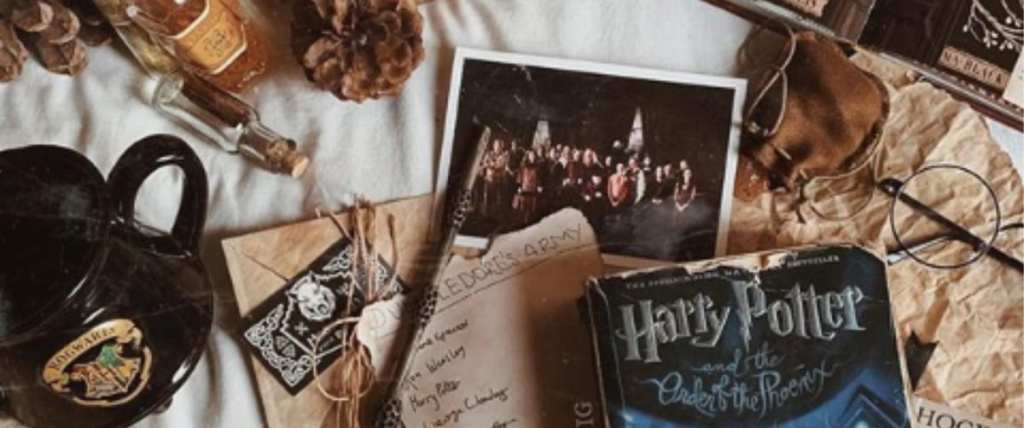When you’re reading or watching Harry Potter, it’s easy to get swept away in the magic of it all. Part of the appeal is the fantastical magic, but like most creative people, author J.K. Rowling took at least some of her inspiration from real life.
Below are 10 pieces of “magic” that you might be surprised to learn aren’t fantastical at all – but totally, really real.
#10. Asphodel
https://www.instagram.com/p/ByinoD5itVq/
Professor Snape’s very first question to Harry is in potions class: “What would I get if I added powdered root of asphodel to an infusion of wormwood?”
Asphodel is a tall, white, flowering plant (a lily relative) and is often associated with death.
Yes, Harry’s deceased mother’s name was Lily, and the question was not an accident.
#9. Wormwood
https://www.instagram.com/p/Bymkalegzqo/
It’s also real: the pleasant-looking herb has been traditionally used to treat gastrointestinal problems, and is also found in liquors like vermouth and absinthe.
The answer to Snape’s question? Draught of Living Death.
#8. Nicholas Flamel
https://www.instagram.com/p/BxfbYdyAtt6/
In Harry Potter and the Sorcerer’s Stone, Nicholas Flamel was the maker of the Sorcerer’s Stone, which could grant immortality (he was over 600 years old at the time of publication).
In real life, Flamel was a medieval scholar, philanthropist, and alchemist who pursued the stone but did not find immortality, after all.
#7. Mandrake
https://www.instagram.com/p/By2v4JJCQZb/
In Harry Potter, the students learn about mandrakes in herbology, where the roots have the form (and screeches) of human babies.
Mandrakes are real plants, and while they can’t actual kill you (except when ingested in high doses), their roots do look like small human bodies. They’ve been used for centuries for their medicinal properties, and an ancient legend does say their screams can cause insanity and death.
#6. Wolfsbane
https://www.instagram.com/p/By14OlOl8GO/
Snape also asks Harry about the difference between monkshood and wolfsbane – which is actually a trick question.
The two are the same plant, known formally as aconite. It’s got purple flowers that resemble a monk’s hood and the flowers are deadly – even touching the plant may be enough to do you in. It was traditionally used to kill wolves.
#5. Bezoar
https://www.instagram.com/p/BWEpdYogr-1/
Snape mentions a bezoar in the first book of the series, noting that it can save people from most poisons, but they are real things.
Bezoars are stones taken from the stomach of an animal (even a human) and are formed from material ingested and collected into a mass. For some reason, the myth that they were panaceas has persisted since antiquity.
#4. Devil’s Snare
https://www.instagram.com/p/BmZeb6agoZt/
The plant squeezes people to death in the first book in the series, and in real life, it’s also poisonous – and it’s seedpods are creepy looking, to boot.
“It’s deadly fun, but will sulk in the sun,” is the rhyme the Hogwarts students used, and jimsomweed (it’s other name) also blooms only at night.
#3. Runes
https://www.instagram.com/p/Byv8t0MAzXV/
Only Hermione Granger studied Ancient Runes – a skill that came in handy when they needed to decipher The Tales of Beedle the Bard in the final installment.
Runes are an ancient alphabet used by Germanic peoples before they adopted the Latin alphabet. Vikings left them in the place they visited, and storytellers have been using them as plot devices for some time.
#2. Invisibility Cloak
https://www.instagram.com/p/ByeQUh2A6fw/
The cloak that Harry’s father handed down to him is one of his most prized possessions, but people can’t go invisible in real life, right?
Wrong.
Scientists from the UK have developed a “surface wave cloak” that uses electromagnetic waves to hide objects, and researchers at the University of Rochester have achieved similar results by manipulating light.
You can’t like, buy one yet, but some day!
#1. Veritaserum
https://www.instagram.com/p/Bx7LH6JgTCv/
Truth serum is threatened (and used) a few times in the Harry Potter books, and wouldn’t a serum to force people to tell the truth come in handy at times?
There are some drugs that, in real life, can lower a person’s inhibitions to the point where they’re unable to keep a secret, but they’re not supposed to be used in any official interrogations.
There is magic among us!






